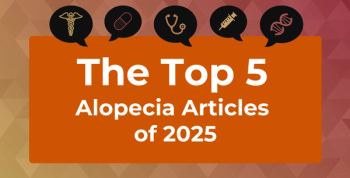
State Legislation Associated With Lower Opioid Prescriptions for Oculoplastic, Orbital Procedures
During the enactment period of recent Michigan opioid laws, a reduction in opioid prescriptions for oculoplastic and orbital procedures was observed and appeared to be sustained, according to research published in JAMA Ophthalmology.
During the enactment period of recent Michigan opioid laws, a reduction in opioid prescriptions for oculoplastic and orbital procedures was observed and appeared to be sustained throughout the study period, according to
Between 1999 and 2016, opioid-related overdoses accounted for over 350,000 deaths and two-thirds of substance-related mortalities in the United States. “Most people are first exposed to opioids through prescriptions, and prescription opioid overdoses contribute to an increasing rate of opioid-related deaths, which reached an incidence of 21.7 per 100,000 population in 2017,” the authors wrote. In the United States, 138 individuals die as a result of opioid overdoses every day.
When it comes to
Although the CDC listed the prescription opioid addiction
In a cross-sectional study, investigators analyzed opioid prescribing patterns for oculoplastic and orbital procedures and identified changes in prescribing patters before and after enactment of state legislation. They performed a retrospective clinical review of data from 3781 patients who underwent 10 common oculoplastic and orbital procedures at a Michigan tertiary care center between June 2016 and November 2019. All patients were aged 18 and older and underwent procedures that included brow-lift, blepharoptosis repair, or canthoplasty, among others.
In addition to demographic data, the researchers compiled details on outpatient opioid prescriptions ordered for each surgery. Prescriptions included those for acetaminophen-hydrocodone, ibuprofen-hydrocodone, tramadol, acetaminophen-tramadol, oxycodone, acetaminophen-oxycodone, aspirin-oxycodone, ibuprofen-oxycodone, hydromorphone, and aspirin-hydromorphone. Throughout the study period, the cohort of prescribers remained consistent.
In June of 2018, 2 components of Michigan’s newly enacted series of opioid laws went into effect. The policy changes required “prescribers, prior to prescribing opioids, to review a report of the patient’s opioid use history and then obtain signed consent from the patient after providing education on safe use and disposal of opioids.” The legislation also enabled prescribers and dispensers to track substance use via a centralized database and assess patient risk over time.
To conduct the current analysis, the investigators calculated morphine milligram equivalent (MME) as the product of dose, quantity, and opioid-specific conversion factor. Specifically, the MME determines the cumulative amount of opioids and aids in comparison between medications.
The mean (SD) age of the patient cohort at the time of surgery was 63.3 (16.6) years, and the majority of patients were female. Analyses revealed:
- Of 2026 patients undergoing surgery before June 1, 2018, 1782 (88.0%) were prescribed postoperative opioids (P < .001)
- Of 1755 patients undergoing surgery after June 1, 2018, 878 (50.0%) were prescribed postoperative opioids (P < .001)
- No differences in age, sex, race/ethnicity, surgery type, or opioids prescribed were reported between the 2 cohorts
- Acetaminophen-hydrocodone was the most commonly prescribed medication (n = 2279 [87.3%])
- A decrease of 26.025 MMEs (equivalent to a 36.2% reduction of mean MME) was observed between June 1, 2017, and September 30, 2018 (β, −1.735; 95% CI, −0.088 to −0.024; P < .001)
- The decrease stabilized at a persistently reduced rate of MME prescribed through the end of the study period (October 1, 2018, to November 30, 2019; β, −0.005; 95% CI, −0.039 to 0.016; P = .42)
Because findings were obtained from a single tertiary care center, the results may not be generalizable to all practices, marking a limitation to the study. In addition, future investigations ought to assess the adequacy of pain relief and use of nonnarcotic medications and effects of statewide opioid legislation on the risk of opioid-related morbidity and mortality, the authors wrote.
“Increasing awareness, communication, and education for both prescribers and patients regarding postoperative opioid use and the potential for abuse and diversion are promising tools to prevent opioid over prescription,” the researchers concluded. “Enactment of legislations similar to the Michigan Opioid Laws across other states or at a national level may help to further combat the national prescription opioid epidemic.”
Reference
Xie Y, Joseph AW, Rudy SF, et al. Change in postoperative opioid prescribing patterns for oculoplastic and orbital procedures associated with state opioid legislation. JAMA Ophthalmol. Published online December 10, 2020. doi:10.1001/jamaophthalmol.2020.5446
Newsletter
Stay ahead of policy, cost, and value—subscribe to AJMC for expert insights at the intersection of clinical care and health economics.








































